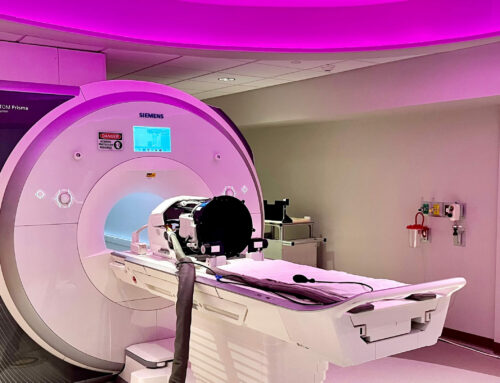By Aimee Harvey, EVP of People and Culture at Zotec Partners |

It’s hard to overstate the pandemic’s profound physical and emotional impacts on frontline healthcare workers. After two long years of fighting the good fight, healthcare practitioners across specialties are experiencing chronic stress leading to rampant exhaustion. Burnout risk among physicians is alarmingly high. A 2022 Medscape survey of 13,000-plus physicians found that, overall, 47% are reporting symptoms of burnout (up five percentage points from 2021), and when broken down by specialty, burnout is highest among emergency medicine (60%) and critical care physicians (56%).[1]
Of course, it would be inaccurate to say that the pandemic was the genesis of physician burnout. In 2019 — well before COVID-19 was part of the lexicon — the World Health Organization listed burnout as an occupational phenomenon in the International Classification of Diseases.[2] However, there’s no doubt the pandemic exacerbated this ongoing wellness crisis. If healthcare organization leaders don’t take action to address the core issues impacting burnout, they might find themselves in dire straits.
How to Prevent Burnout and Empower Physicians
Myriad pandemic-related issues — including PPE shortages, insufficient testing, high patient volumes, widespread vaccine misinformation, etc. — have compounded to push the United States’ already stressed healthcare system to its limits and healthcare practitioners out the door.
Almost one in five healthcare workers voluntarily left their positions between February 2020 and September 2021.[3] Those who stayed aren’t faring much better, though. Per the same Medscape survey, 54% of all physicians said that burnout profoundly impacts their lives. The rising physician burnout rate poses many risks to physicians personally, the patients they treat, and the broader healthcare system.
For instance, many physicians experiencing burnout don’t have good coping mechanisms. As a result, Medscape found that many are isolating themselves (45%) or turning to unhealthy habits, such as binge eating (21%) and drinking alcohol (24%), to self-soothe. Another 68% said that burnout has negatively impacted their personal relationships.
The U.S. is already experiencing a physician shortage, and with 35% of physicians hitting retirement age in the next five years, the system needs an influx of bright, energetic physicians to take up the mantle.[4] If the demand for physicians continues to outpace the supply, quality of care will decrease and patients will suffer. All that’s to say, solving the issue of physician burnout couldn’t be more imperative. So, here are three steps leaders of healthcare organizations can take to combat burnout and motivate physicians:
- Remember, the buck stops here. You cannot expect physicians working within your system to resolve burnout independently because the system itself contributes to burnout. When asked what contributes most to their burnout, physicians named additive stressors, such as administrative duties (60%) and lack of respect from colleagues (39%), according to the aforementioned Medscape survey. However, staffing shortages are a particularly insidious stressor because they trigger a vicious cycle of burnout.
For example, when you’re dealing with a staffing shortage at your healthcare organization, otherwise engaged workers must put in more hours — often for the same compensation and with less support. When physicians are stretched beyond capacity for long periods, it leads to physical and emotional exhaustion, ultimately impacting patient safety, on-the-job satisfaction, and engagement. Therefore, retaining the healthcare practitioners your patients rely on for life-saving care hinges on two things:
- Your ability to create a system that minimizes burnout risk.
- Your ability to provide care and support for those already experiencing burnout.
As a leader, you’re well-positioned to set organizational priorities and respond to the issues impacting your workforce. People want and need to see their leaders committed to building better, healthier work environments.
- Cultivate a sense of purpose and belonging. The human experience is unpredictable and impermanent. Being part of something bigger than yourself adds comfort and stability, especially during tough times. For many physicians, it’s why they went into medicine in the first place. When the pandemic first hit, healthcare practitioners jumped into action. However, people are losing steam two-plus years in and will give up entirely if they feel stranded in the storm. In fact, one study identified lack of belonging as a major reason for voluntary turnover in 2020.[5]
With that in mind, prioritize cultivating a sense of purpose and belonging among your physicians and other staff members. Mental health struggles can be isolating, and physicians might be reticent to speak up about their chronic work-related stress and anxiety because of existing stigma. However, avoid toxic positivity and empty platitudes. You won’t solve your burnout issue by simply reminding people to care for themselves.
Instead, show your staff members they’re not alone by engaging in vulnerable discussions about physician burnout and its broader impacts. Additionally, give your physicians outlets for talking about their burnout struggles amongst themselves, and watch people come together to lift each other up. Offer counseling services and other well-being resources to prepare your staff with the awareness, tools, and power to make positive life choices and changes.
- Dig into the specific issues at your healthcare organization. Most people have a general idea of the macro issues impacting burnout, but solving these problems requires a more detailed understanding of the factors fueling physician burnout at your organization. You won’t be able to gain this knowledge from the safety of the C-suite — you need to tap your on-the-ground team members.
Start by gathering feedback directly from on-staff physicians, and be prepared to take action based on the feedback you receive. For instance, imagine that your physicians tell you they’re struggling to access mental health support. In that case, you might work with your insurance provider to increase accessibility to therapists and other mental health professionals who specialize in treating healthcare practitioners.
Additionally, don’t feel like you have to have all the answers. Instead, look to the countless organizations researching and developing innovative solutions to physician burnout and test their approaches within your own four walls. The program directors at Harvard, for example, have released a new self-care protocol specifically designed for healthcare practitioners and staff.[6] Researchers have also been testing wearable devices designed to sensitize people to their own physiological markers of burnout in order to strengthen their emotional regulation skills.[7]
Healthcare leaders have been facing the issue of physician burnout for years, but COVID-19 highlighted the urgent need to address the root causes. Leaders of healthcare organizations can employ these three strategies to build a work environment that physicians and other healthcare practitioners can get on board with.
 About The Author
About The Author
Aimee Harvey currently serves as Zotec’s EVP of People and Culture. She is a human resources and organizational development leader who focuses on matters of talent scale and development, organizational capability development, and fostering inclusive, high performance cultures. She holds an MBA from the University of TN and is currently pursuing a Masters of Industrial Organizational Psychology at Harvard. Aimee is a certified Leadership and Performance Coach through Brown University.
[1] Kane, Leslie. Physician Burnout & Depression Report 2022: Stress, Anxiety, and Anger. Medscape. https://www.medscape.com/slideshow/2022-lifestyle-burnout-6014664?faf=1. 07/12/2022.
[2] World Health Organization. Burn-out an “occupational phenomenon”: International Classifications of Diseases. WHO. https://www.who.int/news/item/28-05-2019-burn-out-an-occupational-phenomenon-international-classification-of-diseases. 07/12/2022.
[3] Galvin, Gaby. Nearly 1 in 5 Health Care Workers Have Quit Their Jobs During the Pandemic. Morning Consult. https://morningconsult.com/2021/10/04/health-care-workers-series-part-2-workforce/. 07/12/2022.
[4] Robeznieks, Andis. Doctor shortages are here—and they’ll get worse if we don’t act fast. AMA.
[5] O’Halloran, Kelly. There’s No One-Size-Fits-All Approach to DEI. But Here Are Some Starting Points. Built In Austin. https://www.builtinaustin.com/2020/12/15/bigcommerce-dei-strategies. 07/12/2022.
[6] Mollica, Richard F., Augusterfer, Eugene F., et al. New Self-Care Protocol: Practice Guide for Healthcare Practitioners and Staff. Harvard Program in Refugee Trauma. https://hprtselfcare.org/sites/default/files/2020-07/HPRT New Self-Care Protocol – 2020.pdf. 07/12/2022.
[7] ter Harmsel, J.F., Noordzij, M.L., et al. Biocueing and ambulatory biofeedback to enhance emotion regulation. International Journal of Psychophysiology.
https://www.sciencedirect.com/science/article/pii/S016787602030266X!. 07/12/2022.












